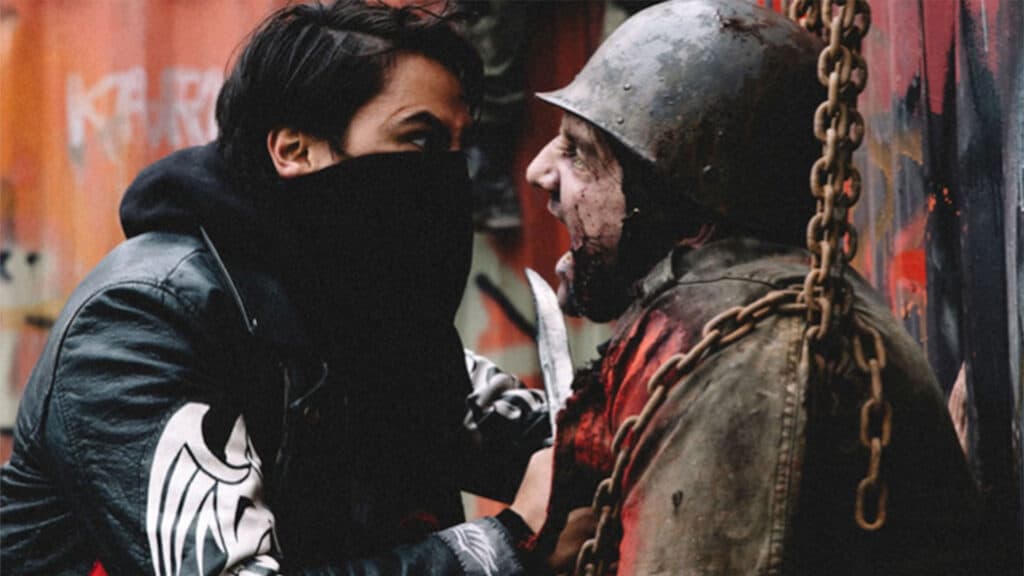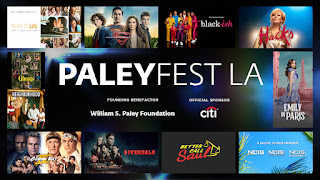 |
| blech |
the Dolby Theatre, April 2-10. Why are we telling you so early? Easy, because tickets go on sale today to the general public today. This year you can see the cast and creative teams behind This Is Us; Superman & Lois; black-ish; Ghosts; The Neighborhood; Hacks; Cobra Kai; Riverdale; Better Call Saul; A Salute to the NCIS Universe celebrating NCIS, NCIS: Los Angeles, and NCIS: Hawai'i; and Emily in Paris.
And a bunch of games came out you might want to try.
Miskatonic Los Angeles offers monthly classes and a discounted full semester pass. For our Spring 2022 Online semester, admission to individual classes is US$10, and a full semester pass including all five classes curated by Miskatonic Los Angeles, is US$40. Please note that students from anywhere in the world can attend.

Miskatonic Los Angeles offers monthly classes and a discounted full semester pass. For our Spring 2022 Online semester, admission to individual classes is US$10, and a full semester pass including all five classes curated by Miskatonic Los Angeles, is US$40. Please note that students from anywhere in the world can attend.
Tuesday January 25th 7:30pm PST
THE CINEMA OF THE RAMSAY BROTHERS
Instructor: Shamya Dasgupta
They were a family of outsiders, who moved to Mumbai from Karachi during the Partition of India, and set up a shop selling and repairing radios. In the 1970s, they transitioned to film producing and, one fateful night while observing the reactions of the crowd in a movie theater, made the decision to pursue the genre that would define their career. In this lecture, Shamya Dasgupta, author of Don’t Disturb the Dead: The Story of the Ramsay Brothers, will detail how seven brothers with a business background embraced every aspect of filmmaking—while economizing at every opportunity—to become India’s first horror film factory and a genre unto themselves. They made a splash in Bollywood, but just like in the movies, their tale has a rise, a fall, and eventual redemption. Join us to learn why, even today, decades later, the Ramsay name is synonymous with horror in India.
Tuesday February 22nd 7:30 PST
THAI HORROR FILM AS AN EXTENSION OF THAI SUPERNATURALISM
Instructor: Dr. Katarzyna Ancuta
Horror has always been important for Thai cinema, although most Thai horror films, steeped in local folklore, history and modes of narrative, have relatively little in common with the genre as defined by major western productions. Most of those films follow strictly supernatural plots built around a variety of beings described collectively as phi (ghosts, spirits, deities, and demons), they are therefore commonly known as nang phi, or ‘ghost films.’ Thai horror films differ from their western counterparts in one more aspect: they exist as an extension of Thai supernaturalism, a collection of shared beliefs and cultural practices that not only affects the portrayal of the preternatural in the films but also frames the functioning of the local entertainment industry. How then does one make a ghost film for an audience that sees living with spirits as part of everyday experience? How does one create a work of fiction that, on some level, can still be recognized as ‘real’? In this lecture we will focus mostly on the 21st century films seen as a distinct stage in the evolution of Thai horror cinema. We will discuss the main themes of these films, situate them in the larger body of Thai cinematic horror, and address the effects of globalization on horror film production in Thailand.
Tuesday March 29th 7:30pm PDT
SHE MADE ME A MONSTER: WOMEN AND GOTHIC LITERATURE
Instructor: Lisa Kröger
We know the Gothic when we see it: the gloomy, mold-covered manor house, the ghostly whispers of long-buried secrets, the heroine locked in a prison of her own mind. Beneath these Gothic tropes is a rich of history of women writers, beginning with the literary success of Ann Radcliffe, and that of the other authors (Regina Maria Roche, Eliza Parsons) who published with Minerva Press in the last decades of the eighteenth century. While the Gothic was a genre geared toward female audiences, it often promoted radical ideas of the feminist movement, which was gaining popularity at the same time. For these women, the Gothic was a space that allowed for the safe exploration of feminist themes like the lack of rights within marriage, the contested female body, women’s autonomy, and more. This lecture will examine women’s critical role in the creation of Gothic literature, as both creators and fans, from the earliest Gothic novels in 1790s England. Then, we will look to the modern Gothic, as it is being reimagined today in literature and film.
Tuesday April 26th 7:30pm PDT
THE WOMEN OF WEIRD TALES
Instructor: Melanie R. Anderson
In the early decades of the twentieth century in America, pulp magazines developed into prime real estate for genre fiction such as westerns, science fiction and fantasy, horror, mysteries, and adventure stories. Specific magazines catered to specific tastes, and readers of Weird Tales (1923-1954) were looking for horror and dark fantasy. Ultimately, the fiction and names of many pioneering writers of genre fiction who wrote for the pulps have faded into history. Many of the surviving works are by men. This, however, does not mean that women were not involved in the production of the pulp magazines. They were in positions ranging from cover artists to editors to writers. This lecture will explore how women were involved in the production of the pulps with a focus on Weird Tales. These women’s stories fit into a larger tradition of horror and dark fiction by connecting the legacy of women writing horror prior to the twentieth century to later generations.
Tuesday May 31st 7:30pm PDT
RACIAL HORROR AND THE MONSTROUS FOREIGN
Instructor: Mila Zuo
Is race a trope of horror? What is racial horror? This talk addresses the abjection of race through the lens of the contemporary horror film. From the Haitian origins of the enslaved zombie to gothic multiculturalisms, the nonwhite figure has been continually enfleshed and encoded in the West as monstrous, alien, and foreign. Often frightening, overly desirous and hyper-appetitive, racialized creatures are the source of terror and jouissance—objet petit a in Lacanian terms. From the horrific specters of slavery and genocide of Black and Indigenous populations to Yellow Peril techno-orientalism, white Western horror thrives upon the abjection of racialized bodies. Drawing together psychoanalytic approaches, critical race theorists together with horror, we will analyze the recent turn of Black and Indigenous horror films as well as global Asian films to reveal the ways in which such conventions are troubled by global nonwhite filmmakers. Finally, we will speculate on the extent to which racial horror casts (counter)spells on its audiences through tempo, color, rhythm, and affect.
Wrapped production on the WNUF Halloween Sequel today.
— Chris LaMartina (@ChrisLaMartina) January 16, 2022
Might crack open the last pumpkin beer I saved from this fall to mark the occasion. Might wait for February when I run the final cut through dueling VCRs.
Either way, big ups to everyone who's helped make it possible. 🎃
Also, for horror fans, excited to hear there's a sequel to the WNUF Halloween special. Can't say I like the other things the people behidn it have made, so here's hoping they stick to the formula from the first and make a fun VHS horror film again.



